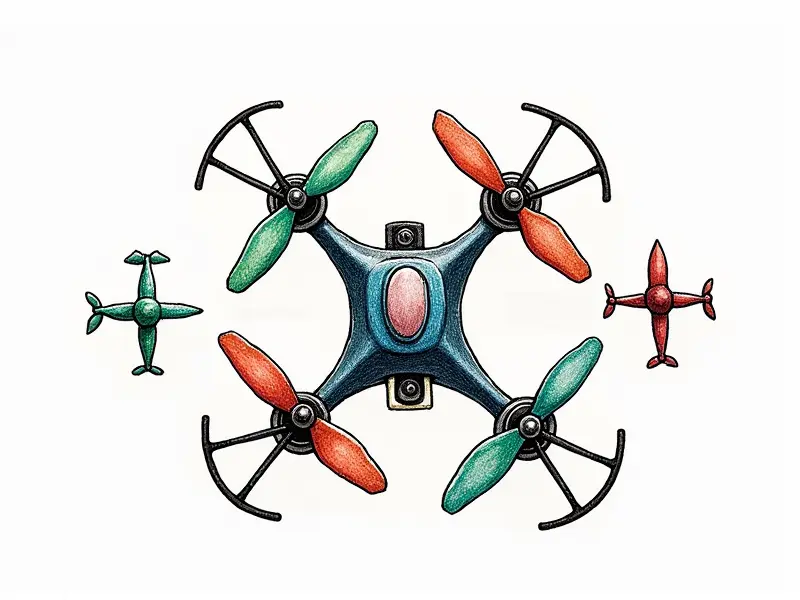What are RC flight modes?

Essential Guide to RC Flight Modes
Welcome to the world of remote-controlled (RC) aircraft! Whether you're a beginner or an experienced pilot, understanding RC flight modes is crucial for optimizing your flying experience. This guide will demystify the various flight modes available and help you choose the right one based on your specific needs.
Understanding RC Flight Modes Explained
RC flight modes refer to different control settings that allow pilots to adjust how an aircraft responds to remote commands. These modes are designed to enhance stability, maneuverability, or performance depending on the type of flying you intend to do. Each mode offers unique features and benefits tailored for specific scenarios.
Top RC Flight Modes Demystified
The most common flight modes include:
- Stabilized Mode: This mode provides basic stability, making it ideal for beginners. The aircraft automatically corrects yaw and pitch to maintain a stable position.
- Acrobatic Mode: Designed for advanced pilots who want more control over the aircraft's movements without automatic stabilization.
- Gyro Mode: Enhances stability by using gyro sensors, making it easier to fly in windy conditions or perform acrobatics with precision.
Quadcopter Flight Modes Simplified
Quadcopters are popular for their versatility and ease of use. Here’s a breakdown of the most common flight modes:
- GPS Mode: Utilizes GPS to maintain altitude and position, making it perfect for aerial photography.
- Magneto Mode: Uses magnetic field sensors for orientation, enhancing stability during flights in areas with poor GPS signal.
- Manual Mode: Offers full manual control over the quadcopter’s movements, allowing for precise maneuvers and acrobatics.
FPV Racing Drone Flight Settings
First-Person View (FPV) racing drones require specialized settings to ensure optimal performance during high-speed races:
- Race Mode: Optimized for speed and responsiveness, allowing pilots to navigate through tight turns with ease.
- Turbo Mode: Increases the throttle response for even faster acceleration, making it ideal for competitive racing scenarios.
RC Helicopter Flight Mode Basics
Helicopters have unique flight modes that cater to their specific control requirements:
- Manual Mode: Provides full manual control over the helicopter’s movements, essential for advanced maneuvers.
- Autorotation Mode: Simulates autorotation during a simulated emergency landing scenario, enhancing safety and piloting skills.
RC Airplane Control Modes Guide
Airplanes benefit from various control modes that enhance stability and maneuverability:
- Gyro Mode: Enhances pitch and roll stabilization for smoother flights, especially in windy conditions.
- Stabilized Mode: Maintains a stable flight path by automatically correcting yaw and pitch movements.
The Ultimate RC Flight Mode Cheat Sheet
To help you quickly reference the best modes for your aircraft, here’s a quick cheat sheet:
| Mode | Aircraft Type | Description |
|---|---|---|
| Stabilized Mode | All Types | Maintains stability by correcting yaw and pitch. |
| Gyro Mode | Heli, Plane | Enhances stability using gyro sensors for better control. |
| Race Mode | FPV Drone | Optimized for speed and responsiveness in racing scenarios. |
| Turbo Mode | FPV Drone | Increases throttle response for faster acceleration. |
Advanced RC Flight Modes for Experts
For experienced pilots looking to push the boundaries of their flying capabilities, there are several advanced modes:
- Auto-Takeoff and Landing Mode: Automatically handles takeoffs and landings with precision.
- Follow Me Mode: Allows the aircraft to follow a designated target autonomously, ideal for videography.
Choosing the Right RC Flight Mode
Selecting the appropriate flight mode depends on your flying experience and the type of aircraft you are using. Beginners should start with modes that offer basic stability features, while more experienced pilots can opt for modes that provide greater control over the aircraft’s movements.
Features to Consider
- Stability: Look for modes that enhance pitch and roll stabilization.
- Maneuverability: Choose modes that offer precise control for advanced maneuvers.
- Performance: Opt for high-speed and responsive settings if you are into racing or competitive flying.
Benefits of Each Mode
- Gyro Mode: Provides enhanced stability, making it easier to fly in windy conditions.
- Race Mode: Optimizes speed and responsiveness for high-speed racing scenarios.
RC Flight Modes: Features and Benefits
The features and benefits of RC flight modes vary depending on the aircraft type. Here’s a summary:
Quadcopters
- GPS Mode: Maintains altitude and position, ideal for aerial photography.
- Magneto Mode: Uses magnetic field sensors for orientation in areas with poor GPS signal.
Helicopters
- Autorotation Mode: Simulates emergency landing scenarios, enhancing safety and piloting skills.
- Manual Mode: Offers full manual control for advanced maneuvers.
Airplanes
- Gyro Mode: Enhances stability using gyro sensors for better control in windy conditions.
- Stabilized Mode: Maintains a stable flight path by automatically correcting yaw and pitch movements.
Conclusion
Understanding the different RC flight modes is crucial for enhancing your flying experience. By selecting the appropriate mode based on your aircraft type and flying skills, you can enjoy smoother flights, better maneuverability, and improved performance. Whether you are a beginner or an expert, there’s always a flight mode that suits your needs.

